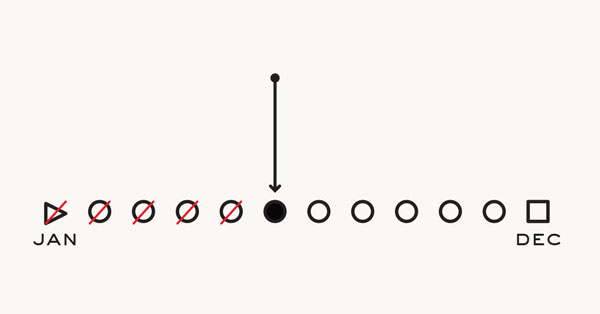If the idea that the first step to increased productivity is better organization seems strange to you, this is a must read. With these simple guidelines, you'll clear the clutter off your desk, empty your email inbox, and finally knock out those last few stray tasks you've been putting off for weeks.
By Luke Steele of The Aspiring Gentleman
The most frustrating part of my previous job was my boss’s inability to respond to emails in a timely manner. I became accustomed to using “URGENT” in the title or some other trick to grab his attention; if he didn’t see my email in the first 24 hours, that email was forever lost in his inbox.
I only realized how bad things really were when he gave a presentation using his laptop, and I saw has email client had over 3000 unread emails. Assuming that a good 10% of those were from me, that still leaves a lot of missed communications. How many potential clients were in those emails? How many problems could have been addressed in their infancy, and have since spiraled out of control?
This article is about getting your inbox, and your life, under control using the techniques of Getting Things Done.
The primary philosophy behind Getting Things Done is we as humans are not effective when our brains are full of all the things we could be doing, should have done, or are otherwise taking up our mental capacity in some way. That massive inbox is totally distracting, and is ultimately inhibiting our ability to be creative and productive. Is there a little nag in the back of your mind that you really need to wash the car? Or take out the garbage? Or draft up that big proposal? The first step is to clear your mind, inbox, and desk, and put everything grabbing your attention into one place.

Create an in-basket for yourself.
This could be a physical folder on your desk, or a virtual notepad. Write down everything that’s on your mind: call Sylvia, paint the fence, contact client x, order more toner, exercise. If any item you find does not have some sort of action associated with it, it is garbage, a “someday/maybe” task, or reference material. Trash or file accordingly.
Go through your physical space, including your desk, bedroom, etc. Everything that’s not where it should be, put it in your inbox, or write a note about it, and put it in your in-basket. Strangely, your email inbox is not a natural in-basket, as the items in there are not clearly defined, are unknown, or require considerable thought before you even understand what to do with it. If you come across any tasks, emails, or items that take less than 2 minutes to complete, answer them now rather then putting them in your in-basket. This is simply because of the small amount of overhead involved with filing things into your in-basket.
OK, so what now? Nothing has really changed. You’ve probably spent a couple hours sorting tasks and ideas, and perhaps have handled some minor emails which required little attention, and have thrown out a fair bit of trash, but in reality you have just gathered all of your problems, concerns, and other things on your mind into one place.
Now, time to tackle your in-basket.
We’re not going to actually do everything, just make a list of what we can do. To me, the most important part of Getting Things Done comes in the step of defining real, actionable tasks. What good is a to-do list with a task such as “buy new car” on it? Faced by the daunting size of this task, most people will inevitably avoid it. As such, it is crucial to define larger tasks as projects (anything requiring more than one sub-task), and define the set of actions (or at least the first) for each project. Want to buy a new car? First call Alice to see if she likes her new Chevrolet. Then spend an afternoon wandering the local auto-mall. Next, make a list of your favourite cars and their pros/cons, and so on.
Your in-basket is now empty, but you have a (potentially massive) list of projects. You know all of the things you need to do, and also all the things you can do; by nature of the above, these items are the first available actions for each of your projects. In this way, even if you’re totally brain-dead after a long meeting, you have already planned out what can and should be done, and can therefore proceed in autopilot completing tasks that you have previously listed as requiring completion as part of a larger project.
I have just attempted to compress two fairly large books (Getting Things Done, and Making it All Work) into a few paragraphs, ignoring many details and aspects of implementation along the way. For this and more, I highly recommend Getting Things Done. While reading it will consume several hours of your time, the hundreds of hours it will save you down the road will more than compensate you for your time, as you learn to effectively manage complex tasks, stay on top of your workload, and release your creativity from the bounds of an over-burdened mind. I hope it will be as life-improving for you as it has been for me.















